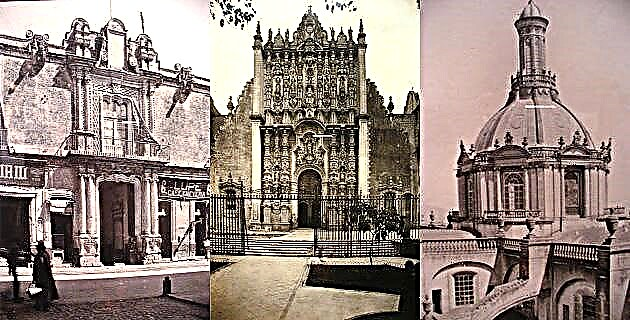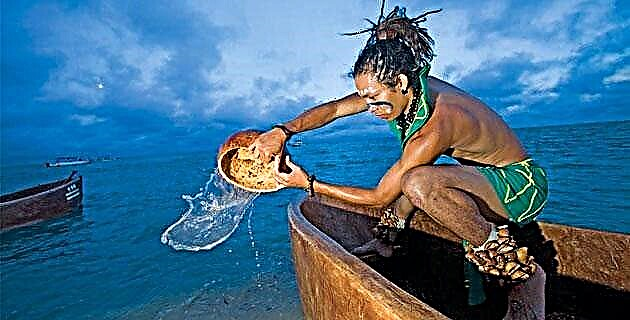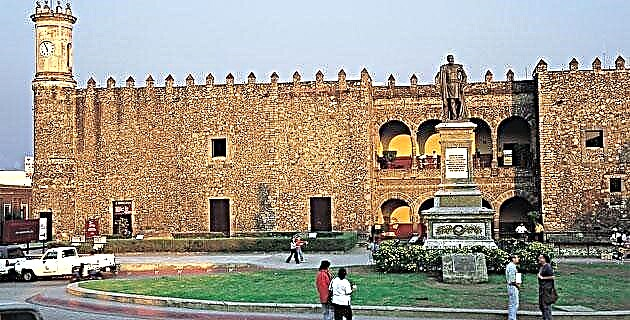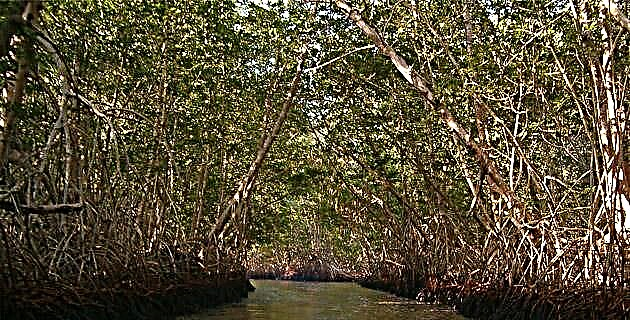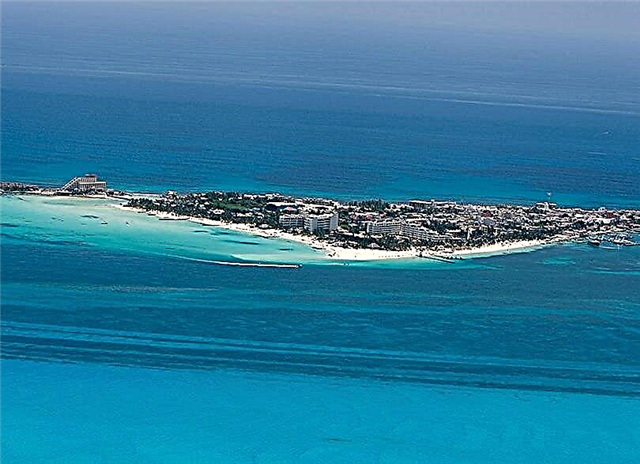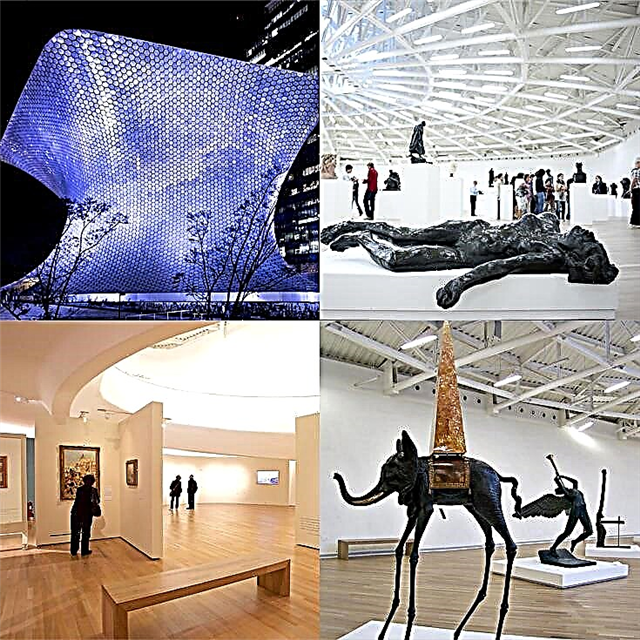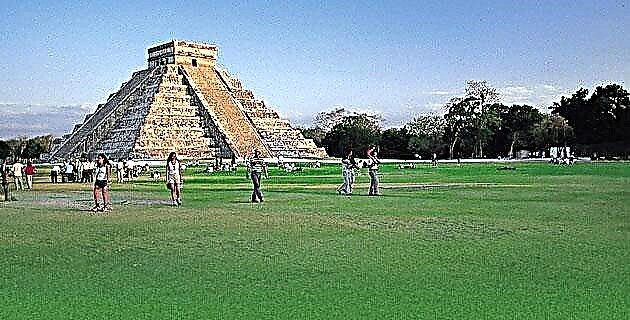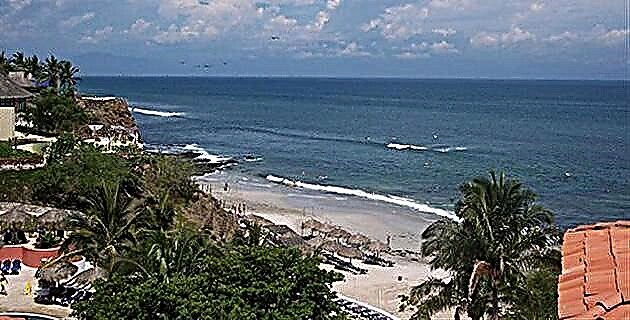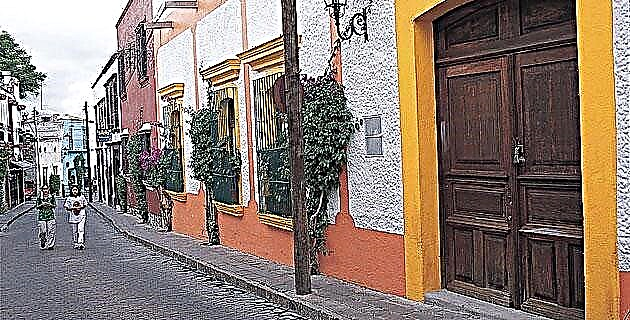
Regarding the origin and meaning of its name, everything indicates that Querétaro is a word that comes from the Purépecha language and means "ball game" (like Tlachco in Nahuatl and Nda-maxeien Otomí).
Traditionally, the Querétaro region had always been the land of the Otomi, but upon learning of the conquest of Mexico-Tenochtitlan, several groups that inhabited the region decided to leave it to enter the northern lands, in order to get away from the new lords. Their life changed radically, as they not only left their property and belongings, but also gave up their sedentary life to become hunter-gatherers, like the Chichimecas. Regarding the origin and meaning of its name, everything indicates that Querétaro is a word that comes from the Purépecha language and means “ball game” (like Tlachco in Nahuatl and Nda-maxeien Otomí). Traditionally, the Querétaro region had always been the land of the Otomi, but upon learning of the conquest of Mexico-Tenochtitlan, several groups that inhabited the region decided to leave it to enter the northern lands, in order to get away from the new lords. Their life changed radically, as they not only left their property and belongings, but also gave up their sedentary life to become hunter-gatherers, like the Chichimecas.
The current city of Querétaro is located on a hillside that is located at the entrance of a small valley, at a height of 1 830 meters above sea level. The climate is temperate and in general the rains are moderate at all times of the year. The surroundings of the city present a semi-desert panorama, where the vegetation is represented by cacti of the most varied species. Its population currently ranges between 250 and 300,000 people, distributed over about 30 km2. The main economic activities are industry, agriculture, and commerce.
HISTORY
The first Spanish conqueror to arrive in this valley in 1531 was Hernán Pérez de Bocanegra and he did so with a group of indigenous people of Purépecha and Otomí origin from Acámbaro, who decided to found a town.
As a result of a confrontation between Pames and Spaniards (with their allies), Conín, an ancient Otomí Pochteca, was converted to Christianity and baptized with the Spanish name of Hernando de Tapia.
Well, Don Hernando de Tapia was the founder of the first town of Querétaro formally recognized by the Crown (1538), but due to the conditions of the land, later, in 1550, the population moved to where its beautiful center is today. historical. The general outline of the population is due to Juan Sánchez de Alanís.
With the passage of time, Querétaro became the seat of a large number of convents and hospitals, founded at different times and by different religious orders. There are Franciscans, Jesuits, Augustinians, Dominicans, Discalced Carmelites, and others.
One of the most important religious buildings in this city, founded in the 16th century, is the Santa Cruz convent, whose purpose was to promote the cult of the Holy Cross of the Conquest. However, for a long time this building was under construction and it was not until the second half of the seventeenth century that it was completed (both the temple and the convent). In the end, from this place the distinguished missionaries departed who catechized in the northern and southern reaches of the kingdom of New Spain: Texas, New Mexico, Arizona, Alta California, Guatemala and Nicaragua. Another building of great beauty and importance is the Royal Convent of Santa Clara, founded in the early seventeenth century (1607) by Don Diego Tapia (son of Conín), so that his daughter could fulfill her religious vocation.
Unlike other cities and regions of New Spain, Querétaro had a great economic development since the seventeenth century, a time when huge investments were made to rebuild the buildings of the previous century, which were beginning to outnumber the prosperous population . From the first half of the seventeenth century, the Queretans requested the title of city for their population, but the King of Spain (Felipe V) did not issue the authorization until the beginning of the eighteenth century (1712), when he granted it the title of Very Noble and Very Loyal City of Santiago de Querétaro.
The enormous material and cultural wealth that this city came to have is reflected in its excellent religious and civic buildings. The main economic activities of Querétaro were, in rural areas, agricultural production and the raising of large and small livestock, and in urban areas the production of good quality fabrics and intense commercial activity. Querétaro and San Miguel el Grande were at that time the main centers of textile production; There, not only the clothes of the miners and peasants of Guanajuato of the viceregal era were manufactured, but good quality cloths that also had a market in other parts of New Spain.
And as if this were not enough, Querétaro has always been the scene of various events that have transcended the history of the country. During the first years of the XIX century, the meetings or gatherings that were the beginning of the New Spain War of Independence took place in this city. One of the main participants of these meetings was the captain of the Dragons of Queen Ignacio de Allende y Unzaga, who was a great friend of the corregidora Doña Josefa Ortiz de Domínguez. In the end, they would become protagonists of the armed movement of 1810.
As is known to everyone, on the night of September 15, 1810, the Corregidora notified Captain Allende that the Querétaro conspiracy had been discovered by the viceregal government, which caused the independence movement to start earlier than expected. . The governor of Querétaro Don Ignacio Pérez was the one who traveled to San Miguel el Grande to warn Allende, but when he did not find him, he moved in the company of Captain Juan Aldama to the Congregation of Dolores (today Dolores Hidalgo), where Allende and Hidalgo were. who decided to start the armed movement in the early morning of September 16.
Once the war began and due to the reports that the viceroy received of the danger of the Queretans, the city remained in the hands of the royalists, and it was not until 1821 when the independence army led by General Agustín de Iturbide could take it. . In 1824 the territory of the old Querétaro was declared one more of the states that would make up the newly formed Republic of the United Mexican States.
However, the first years of the Republic were not easy. The first Mexican governments were very unstable and therefore a large number of political problems arose that destabilized various entities, including Querétaro, which due to its proximity to Mexico City, frequently experienced violent events.
Later, in 1848, Querétaro was the scene of the peace treaty that was signed with the United States of America, after our country was invaded by that nation. It was also an important theater during the French intervention and the empire of Maximilian. This city was precisely the last obstacle that the republican army had to defeat imperialism.
Almost 20 years had to pass for the city to restart once again the reconstruction of a series of buildings that had been abandoned during the tough contests between conservatives and liberals. As in many other cities in the country, the Porfiriato represented a period of rebound for Querétaro in regard to architectural and urban works; then squares, markets, stately homes, etc. were built.
Once again, due to the armed movement of 1910, Querétaro witnessed important events in the history of Mexico. For security reasons, on February 2, 1916, Don Venusiano Carranza declared this city the seat of the provincial powers of the Republic. One year and three days later, the Theater of the Republic was the scene of the promulgation of the Political Constitution of the United Mexican States, a document that to date continues to rule the lives of all Mexican citizens.
MAIN POINTS OF INTEREST ON THE WALK
The walk through Querétaro can be done from different points, but the most appropriate thing is to start it in the center. In the Plaza de la Constitución there is a parking lot where you can leave your car with confidence.
A few meters from the exit of the parking lot, is the old convent of San Francisco that today is the headquarters of the Regional Museum, where you can admire one of the best collections of viceregal pictorial art. This building is particularly remarkable for the history of the city because it was the origin of the original outline of the town founded by Hernando de Tapia. Its construction lasted about a decade (1540-1550).
However, the current building is not the primitive one; it is the building rebuilt around the second half of the seventeenth century by the notable architect José de Bayas Delgado. Perhaps the only clear vestige of the 16th century is the pink stone on which the relief of Santiago Apóstol is carved. The vaults of this temple are one of the best examples of the architecture of the master Bayas, who in 1658 began to work with the Franciscan friars in the reconstruction of the convent, and two years later in that of the temple.
When you leave this building, turn right and walk to Calle de 5 de Mayo. There you will find a civil work ordered to be built around 1770 of extraordinary historical importance since it was the headquarters of the Royal Houses of this city. But perhaps the most notable historical event is that from here, on September 14, 1810, the wife of the town mayor, Mrs. Josefa Ortiz de Domínguez, sent a message to San Miguel el Grande addressed to Captain Ignacio de Allende, informing him about the discovery of the plan to make New Spain independent from the Spanish kingdom. Today it is the Government Palace, seat of state powers.
On the streets of Libertad and Luis Pasteur is the House of Don Bartolo (current Ministry of Public Education), a precious example of civil architecture from the viceregal era, which was occupied by a person of great importance for the economy of New Spain : the Marquis de Rayas Don Bartolomé de Sardaneta y Legaspi, who along with his family was a pioneer of technological innovation in the mining industry of Guanajuato. They are responsible for the construction of the first very deep vertical shafts, which were so successful in the development of viceregal mining.
Unlike the buildings of the seventeenth century, in the eighteenth century temples with greater decoration are built. The façade of the Temple of San Agustín is characterized by presenting three bodies that end with a crucifix embedded in a cruciform niche made of pink stone and richly decorated. This temple was completed in 1736.
Undoubtedly, one of the most representative buildings of Queretaro religious architecture of the 18th century is the Temple and Convent of Santa Rosa de Viterbo, as its buttresses or flying buttresses are a reflection of one of the architectural innovations of the time, which were intended to build huge domes and at the same time create extremely strong ornaments, but beautiful in their forms.
But if the forms of the exterior delight us, those of the interior enchant us; its 18th century altarpieces decorated with exquisite taste, are a tribute to plant forms. Capitals, niches, doors, columns, angels and saints, everything is invaded by golden leaves, flowers and fruits. And if that wasn't enough, the pulpit is decorated in a Moorish style with inlays of mother-of-pearl, ivory and different woods that make it a true masterpiece of cabinetmaking.
The beautiful and refreshing area of the Alameda dates from the viceregal period, although over time it has undergone various interventions that have modified its original appearance. It is very likely that it has been adorned with other types of trees, since the Indian laurels that today make the internal landscape of the Alameda green, date back to just a few decades ago.
We leave the aqueduct until the end, a magnificent example of hydraulic engineering of the viceregal era because, without a doubt, it is the most representative monument in the city of Querétaro. Built during the first half of the 18th century by the Marquis de la Villa del Villar del Águila in order to satisfy a primordial need of yesterday and always, today it still stands majestic, standing out among the urban profile of the population.
Although it no longer fulfills its original function, there is no urban panorama of Querétaro where the slender but strong figure of the aqueduct does not stand out. Its 74 majestic arches seem to be the arms that are welcoming anyone who wants to enjoy unforgettable hours.
This little tour through the streets of Querétaro would be just like the appetizer of a delicious meal. It is up to you, dear reader, to delight in the rich banquet of baroque shapes, colors and textures that the urban landscape of Querétaro offers us. Bon Appetite.
Other places worth visiting are, for example, the Neptune Fountain, a work carried out by the notable Guanajuato architect Francisco Eduardo Tresguerras in 1797; the House of Dogs, inhabited for a long time by Mariano de las Casas, one of the most recognized architects in Querétaro; the Casa de la Marquesa that was inhabited by the wife of the Marquis del Villar, benefactor of the city and builder of the aqueduct; the Great Theater of the Republic; the Old House of Tithe; the House of the Five Patios, and the House of Ecala.
Source: Unknown Mexico No. 224 / October 1995


